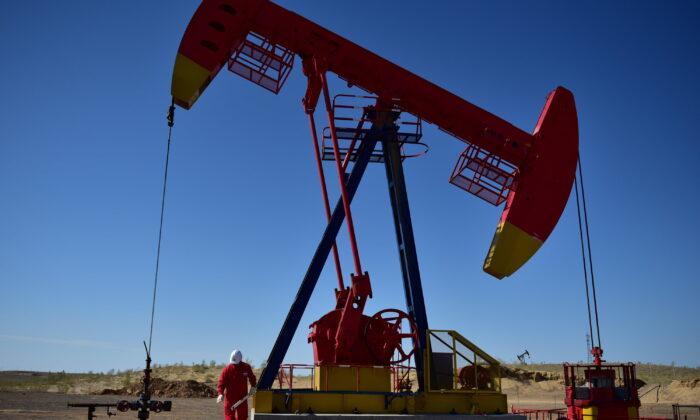LONDON—Oil prices rose on Wednesday to their highest since early December on optimism that the lifting of China’s strict COVID-19 curbs will lead to a fuel demand recovery in the world’s top oil importer.
Brent crude futures were up $1.21, or 1.41 percent, to $87.13 a barrel by 0942 GMT, while U.S. West Texas Intermediate (WTI) crude futures were up $1.36, or 1.7 percent, to $81.54. Both were at their highest since early December.
China’s economic growth slowed sharply to 3 percent in 2022, missing the official target of “around 5.5 percent” and marking its second-worst performance since 1976.
But the data still beat analysts’ forecasts after China started rolling back its zero-COVID policy in early December. Analysts polled by Reuters see 2023 growth rebounding to 4.9 percent.
The lifting of COVID-19 restrictions in China is set to boost global oil demand this year to a new record high, the International Energy Agency (IEA) said on Wednesday, while price cap sanctions on Russia could dent supply.
The IEA report followed expectations from the Organization of the Petroleum Exporting Countries (OPEC) that Chinese oil demand would grow by 510,000 barrels per day (bpd) this year after contracting for the first time in years in 2022 due to COVID-19 containment measures.
But OPEC kept its 2023 global demand growth forecast unchanged.
Further support came from expectations of a drawdown in U.S. crude stocks by around 1.8 million barrels in the week to Jan. 13, according to a Reuters poll.
The poll was conducted ahead of reports from the American Petroleum Institute, an industry group, due at 4:30 p.m. ET (2130 GMT) on Wednesday.
On the supply side, oil output from top shale regions in the United States is due to rise by about 77,300 bpd to a record 9.38 million bpd in February, the U.S. Energy Information Administration (EIA) said on Tuesday.





